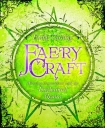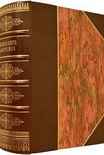Faery Craft: Weaving Connections with the Enchanted Realm Carding, Emily (first color ebook reader txt) 📖

Book online «Faery Craft: Weaving Connections with the Enchanted Realm Carding, Emily (first color ebook reader txt) 📖». Author Carding, Emily
Professor Ari Berk on Faeries and the Dead
We would much prefer to see tiny fairies in floral dresses and so on, but the truth behind this idea of fairies as little children is part of an older, dark tradition that people are really not too excited to hear about. When you start talking about Faery lore and the disposition of the souls of unbaptised children, a lot of people are ready to turn off. That’s it—back to the Disney Channel! But really this is where so much of the lore originates: in loss, in mourning, in wanting to know the dead remain close to us, in our desire to continue our conversations with those we love. In this branch of lore, Faerieland becomes a kind of earthly limbo. But this is only one aspect of Faery.
If you ask me what a Faery is, it’s impossible to answer in one breath. It’s a word that has so many meanings and many incarnations. Is a faery the house Lar of the ancient Roman household? That’s one version, one mask, and a very old one that still has resonance. Is a faery a spirit of the dead? Yes, absolutely. That is one area of Faery lore that is much ignored now, in favour of a fluffier kind of faery. That’s because we don’t like obligation, as a society. Faery lore is filled with obligation. You are resident in this place or that place, and many, many successive generations of people have lived there before you. What is your obligation to these people who are most likely nameless? From their earliest appearances in story and lore, faeries have represented the nameless dead of the land. We have lineage ancestors whom we know, but then there are the—may I call them “landcestors”? These are the oldest spirits of place whose names are often forgotten but who still must be acknowledged. Sometimes these come to us as faeries.
Faeries as the ancient dead should be really relevant to us, because most of us do not live in the same town or village where we were born, so lore that tries to bridge the gap between newcomers and the local landcestors (it’s an official word now), the past residents of a place, is vitally important. We tend to look forward only, and that means we lose our sense of obligation to a place. That means at a town council meeting, we’re more likely to vote to put the new parking lot over the ancient burial mound, because we’ve forgotten or refuse to learn the stories of the places where we choose to reside…
Faery lore is about interdimensional respect—respect between people and their past. It helps to not think about yourself purely as yourself. Our edges appear to be finite, but they’re not; we’re interconnected in a thousand ways with our environment, but we forget that so easily! This kind of lore helps one to reestablish those links.
Ari Berk in an interview with the author in 2011. Ari Berk is a world-renowned expert on folklore and mythology, with a large number of published titles to his name, including The Runes of Elfland (with artist Brian Froud), The Secret History of Giants, and Coyote Speaks: Wonders of the Native American World (with Carolyn Dunn). He is also an accomplished writer of fiction and is the author of Death Watch (book one of The Undertaken Trilogy). Dr. Berk is Professor of English at Central Michigan University, teaching courses in mythology, folklore, American Indian studies, and medieval literature. He is also the former editor of the Realms of Fantasy magazine’s Folkroots section and sits on the board of directors of the Mythic Imagination Institute. His work can be explored via his website at www.ariberk.com.
The Ancestors and Spirits of the Dead
“In the Western Isles of Scotland the Sluagh, or fairy host, was regarded as composed of the souls of the dead flying through the air, and the feast of the dead at Hallowe’en was likewise the festival of the fairies.”
Lewis Spence, The Magic Arts in Celtic Britain
Faeries and the spirits of the dead have long been associated in Celtic folklore and mystical belief. Whereas most see the faeries as a race of beings in their own right, they are undeniably connected to the realm of the dead, and there are some who believe them to be one and the same. The sidhe of Ireland are named for the same burial mounds in which the ancestors rest, and the Banshee, or Bean-Sidhe (Faery Woman), who gives an eerie scream into the night when a member of a particular family is about to die, is often referred to as a ghost or ancestral spirit. Folklore is replete with tales of departed relatives being sighted in the company of faeries, and there are numerous mentions of precognitive visions of this nature, with the person spotted in the company of the faeries dying a short time afterwards.
Akin to the belief that Faery beings may, in fact, be the spirits of the restless dead is the theory that they are a memory of our ancient ancestors, who lived in turf-covered homes and were short and dark. Perhaps in some cases this may be true, and this memory has been passed down through folklore. Indeed, some places may hold strong memories of earlier times and people that we may witness as echoes in the energy of the land, but this theory comes nowhere near to explaining the wide variety of beings that may be encountered within Faery, nor the powers that they undoubtedly hold.
As to the association with days such as Samhain, a festival in which the dead may be invited to feast with





Comments (0)